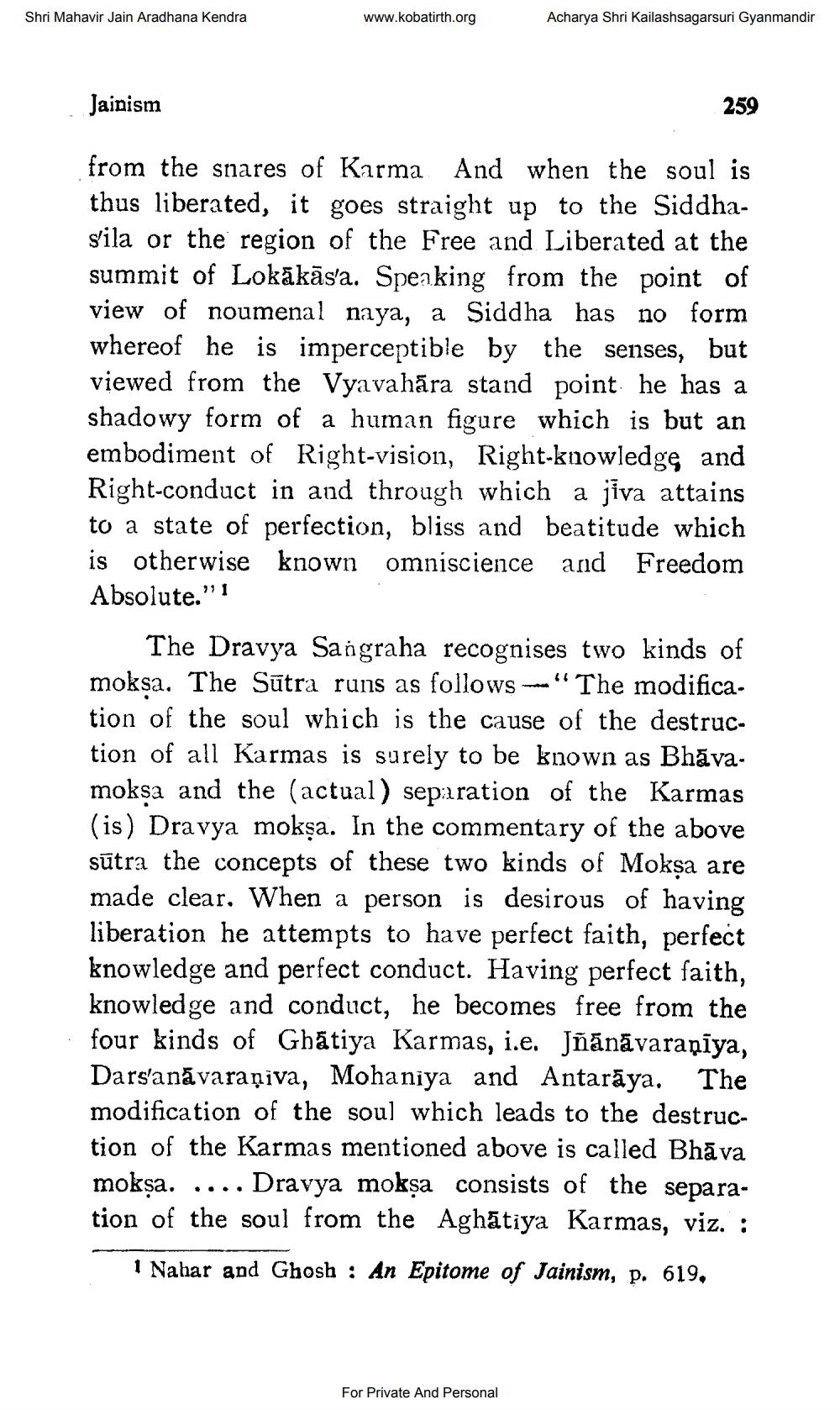________________
Shri Mahavir Jain Aradhana Kendra
www.kobatirth.org
Acharya Shri Kailashsagarsuri Gyanmandir
Jainism
from the snares of Karma And when the soul is thus liberated, it goes straight up to the Siddhas'ila or the region of the Free and Liberated at the summit of Lokākās'a. Speaking from the point of view of noumenal naya, a Siddha has no form whereof he is imperceptible by the senses, but viewed from the Vyavahara stand point he has a shadowy form of a human figure which is but an embodiment of Right-vision, Right-knowledge and Right-conduct in and through which a jīva attains to a state of perfection, bliss and beatitude which is otherwise known omniscience and Freedom Absolute."1
For Private And Personal
259
The Dravya Sangraha recognises two kinds of mokṣa. The Sūtra runs as follows "The modification of the soul which is the cause of the destruction of all Karmas is surely to be known as Bhāvamokṣa and the (actual) separation of the Karmas (is) Dravya mokṣa. In the commentary of the above sūtra the concepts of these two kinds of Mokṣa are made clear. When a person is desirous of having liberation he attempts to have perfect faith, perfect knowledge and perfect conduct. Having perfect faith, knowledge and conduct, he becomes free from the four kinds of Ghatiya Karmas, i.e. Jñānāvaraṇīya, Dars'anavaraṇiva, Mohaniya and Antaraya. The modification of the soul which leads to the destruction of the Karmas mentioned above is called Bhava mokṣa. Dravya mokṣa consists of the separation of the soul from the Aghatiya Karmas, viz. :
1 Nahar and Ghosh: An Epitome of Jainism, p. 619,




